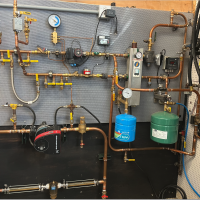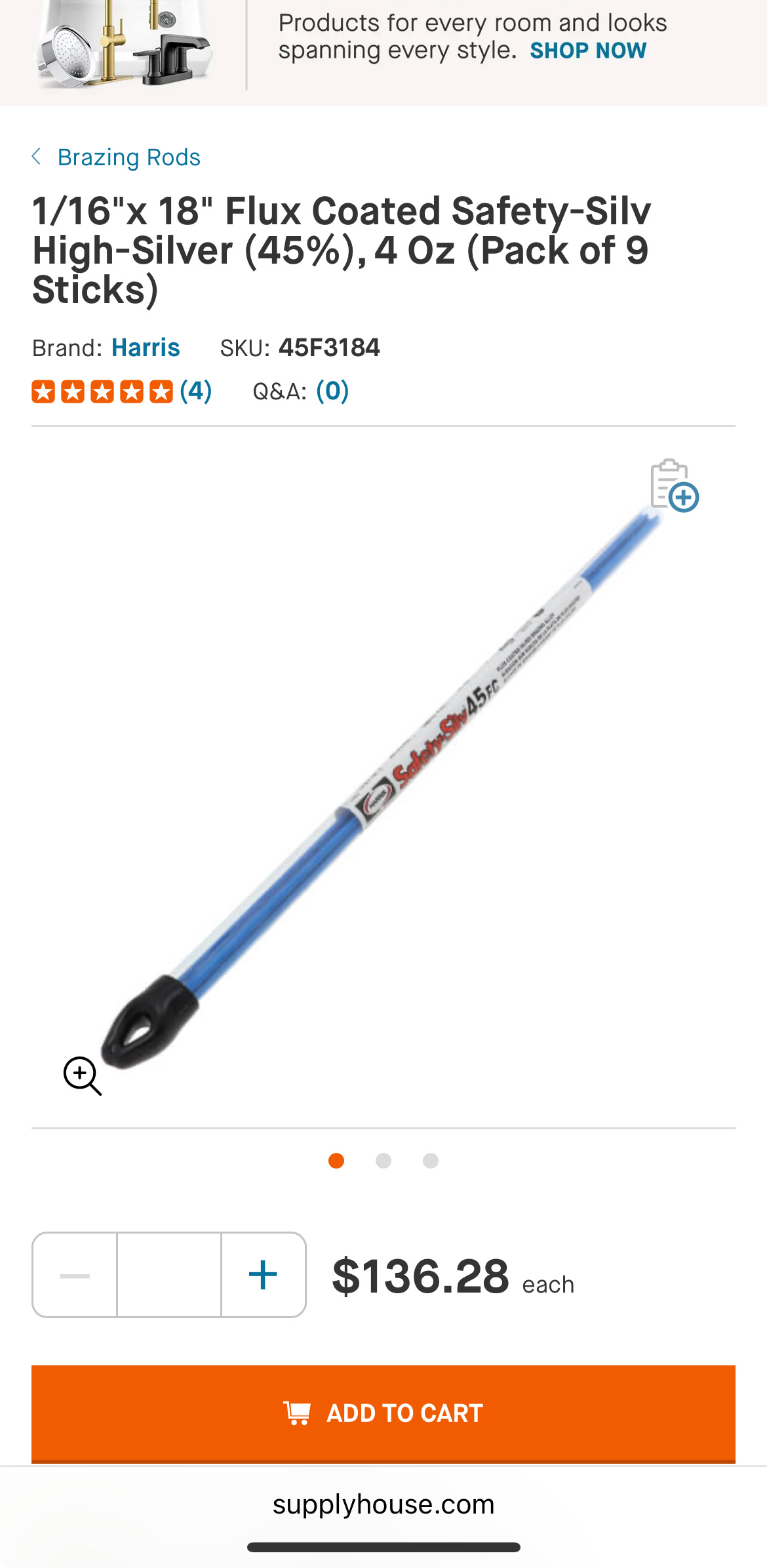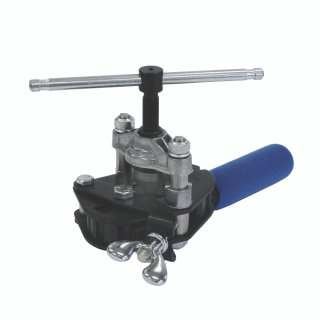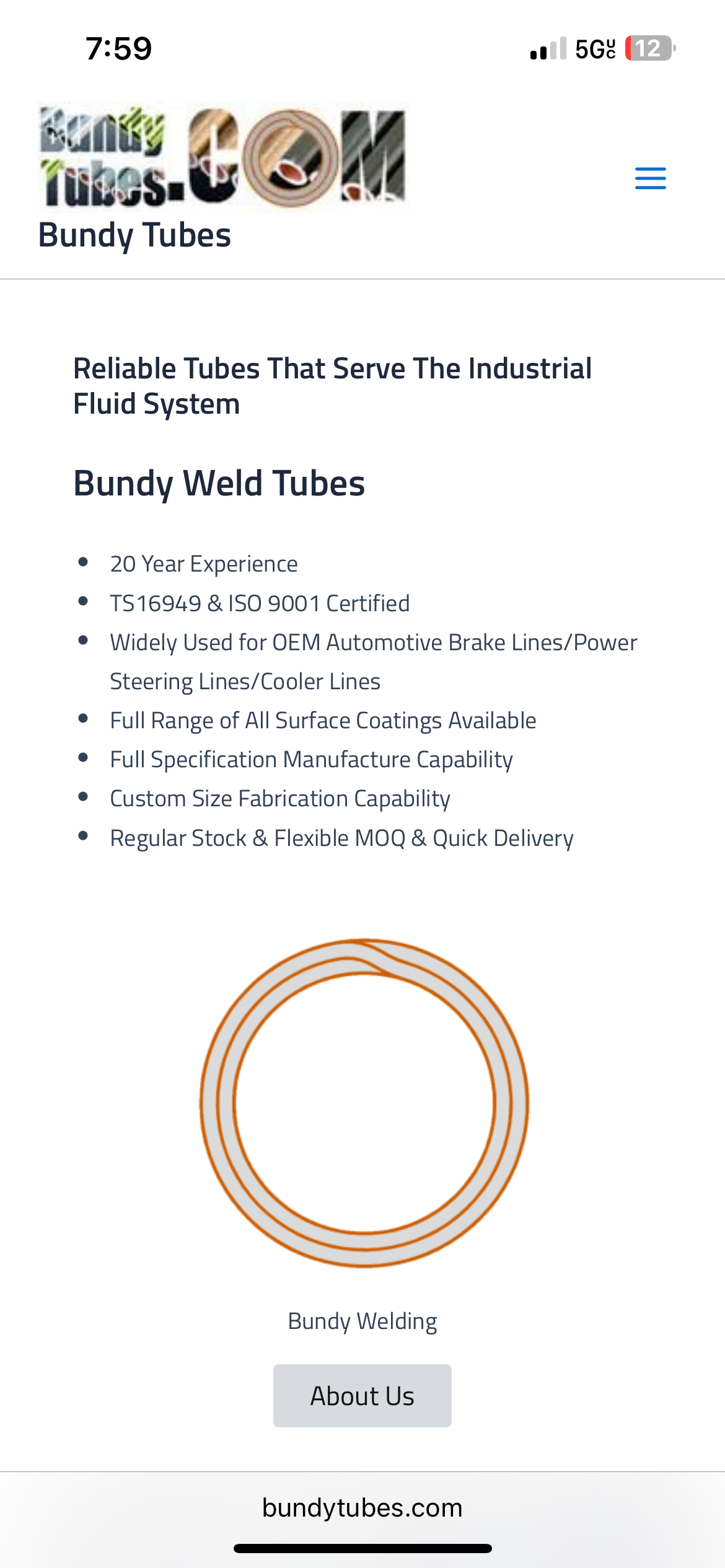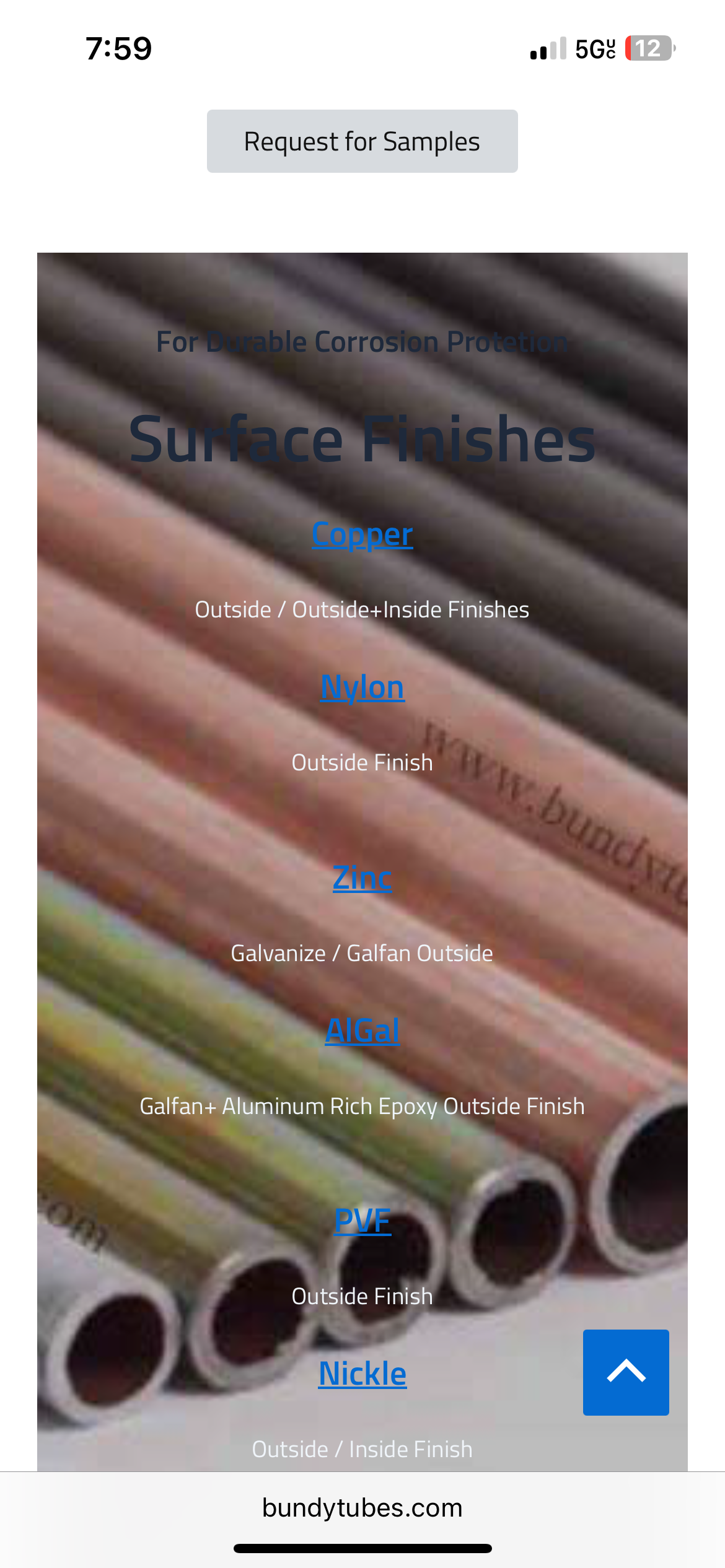1/2" tin-coated steel tubing that matches CTS in old fin-tube system
My folk's house has a horribly inefficient1960's Triad boiler piped to original fin-tube . The 1/2" loops to the fin-tube that I figured were copper are actually steel that has some sort of tin coating that allowed it to be soldered to cast brass or bronze fittings, or to formed copper fittings. I know it's steel - a magnet sticks to it, and it's a lot harder to scratch than copper. Has anyone come across or worked on this tubing before?
I'm looking to replace their boiler. I'd like to transition from the steel to PEX and set it up with SS radiant heat manifolds on a wall panel. I'm wondering if PTC/Shark-bites will work between the PEX and the 1/2" steel tubing? Or I can sweat copper-PEX crimp adapters with conventional lead-free plumbing solder? Trials on existing material are a problem, as there isn't any extra old tubing lying about!
Comments
-
I have heard of this product. I agree that trying to solder to it may be problematic. if you get it too hot and burn off the tin you are out of luck with getting another fitting to attach to that stuff. I believe that Sharkbite® fittings is rated as a permanent repair that can actually be covered by sheetrock. I would go that route if you need to. But you should not need to change any pipes that are connected to those radiators. As long as the system was balanced for all those years, you should just need to reconnect the new boiler to the existing supply and return mains in the boiler room.
Is there a reason you need to do a major repipe? Would it be worth replacing the radiators or at least the elements with new copper elements?
Edward Young Retired
After you make that expensive repair and you still have the same problem, What will you check next?
0 -
Thanks, Ed. I hear you on the soldering concern. I wasn't sure if Shark-bite and equivalent would seal on steel vs. something softer.
The Triad boiler is like a tall, cylindrical water heater. The current supply pipes is a cold-bent 90 out of black iorn with threaded ends, that runs into a ahnd-made manifold for 8 each 1/2" loops, with gate valves for flow control. This mess is hanging from a ceiling joist, from where it splits off under the floor joists to wherever using (mostly) soldered elbows and tees. The boiler is probably 70% efficient, and noisy. Residual heat off the boiler and out the chimney is ridiculous. It kind of goes without saying the old 'balancing valves' don't turn any more.
Luckily, the laundry room has a drop ceiling and an exposed stud wall near the chimney, where I'd be doing this work. Everything else in the basement and upstairs is covered by sheetrock. I can access the loops at the boiler end to without a lot of gymnastics. My hope was to put in a new boiler that is 85% efficient, 1/2 the space, clean up dangling piping mess, wall-mount the pumps and new manifolds with stuff where I can actually adjust flow.
Using the existing chimney is pretty important. I'd love to put in a mod-con and direct vent, even if it only runs in condensing mode a little bit - just to have modulation. But getting PVC up through the roof will be a PITA. The 'easy' sidewall option is problematic because it comes out at the sidewalk (MN winters - no go). Other sidewall routes mean going through sheetrock walls and ceilings having exposed pipes to maintain 1/4"/12" condensate backslope.
My folks are quite old and probably won't be in the house more than another year. Maybe I should leave it all alone and let the next owner deal with it 😉!
0 -
if it is CTS a press fitting would work
If it is IPS a mega press fitting
Id trust these more than a grip fitting
Bob "hot rod" Rohr
trainer for Caleffi NA
Living the hydronic dream0 -
-
I knew I went to the right place with this question! Thanks for the recommendations.
I found reference in a Shark-bite brochure to them working to connect carbon steel tubing to copper, PEX, polybutylene. But, in their website FAQ they do not mention carbon steel in their list of certified materials. I put a queston into tech support to ask 'Is carbon steel tubing of matching OD acceptable or not? I'm not refrring to galvanized pipe!' We'll see what they say.
FWIW, I use PTC fittings for air and water in automation a lot. No way I'd bury them out of sight. I know how to hard solder, braze, and TIG. I'm just hoping not to turn this into a bigger project than it's worth :)
0 -
Should be able to soft solder it, just might have to tin everything before you assemble it.
Should be able to flare it too.
0 -
Hot_Rod -
I am somewhat familiar with copper press fittings, but haven't used them.
Is it permissible to use press copper fittings over the tinned steel tubing, in order to transition from the tinned steel tubing to PEX? Or would I have to look for steel-to-PEX transition fittings (which I'm guessing would be a challenge to find)?
0 -
Mattmia -
Makes sense. I can solder, and I've flared steel tubing.
Sounds like several options - enough to risk a test on an existing loop while it's still warm outside!
0 -
Steel to copper can always be silver soldered but it wouldn't be much fun.
0 -
without knowing exactly what you have for tube, I doubt the press fitting manufacturers would sign off on that
Same with the grip fittings.
Try soft solder first, this rod works well for copper to steel, but crazy expensive
Bob "hot rod" Rohr
trainer for Caleffi NA
Living the hydronic dream0 -
Thank you to everyone where for info and advice. This is clearly an atypical iretrofit. As somebody who lives doing one-off R&D work, I get the risks.
I watched a video proof-testing two brands of PTC connector and a pro-press equivalent on copper. Sample size of 1, and I'm not one to believe everything on the internet. But, the ste-up and tests were pretty convincing that any of the three conection methods, for copper fitting-on-drawn copper tube, had PLENTY of reserve for short-term failure under high internal water pressure. Whether that holds long-term or is true for copper-on-steel? Dunno… that get's into about shear between dissimilar materials, galvanic corrosion, o-ring degradation, et al. Not not dissimilar from checking shear between soldered joints, both short and long-term.
The cost of hand-held hydraulic pro-press'ish crimpers look to be quite reasonable compared to the $2-3k I remember for battery tools 10. For 8-16 overhead connections in joist bays, I can see that being no worse than a hand-actuated PEX SS clamp crimper. Has to be easier than flaring, or safer and easier than tinning and sweating those connections up there…
0 -
I believe its called Bundy tubing. Someone w/ decent soldering skills can solder fittings on it. I would try 50/50 solder. Low melt point and long work time.
0 -
Go up to the search button on this site and search on Bundy Tube. You will learn more about your tubing.
0 -
Viega makes a transition coupling for IPS pipe to copper. It may work, but I would talk to their tech support.
https://s3.amazonaws.com/s3.supplyhouse.com/product_files/Viega-76605-Product-Overview.pdf
Owner of Grunaire Climate Solutions. Check us out under the locate a contractor section. Located in Detroit area.
0 -
Searching through threads on 'bundy tubing' had mentions of 50/50 solder, 'standard solder', and Mark Eatherton saying he'd done a lot of 95/5 repairs with success.
Also saw mention of compression fittings working well. Brass compression to PEX crimp adapters are readily available.
Searching online, including Viega's website, I don't find a 'yes' to using copper pro-press on carbon steel CTS sized tubing. I'd be surprised if it wouldn't hold fine, but I think there are concerns with temperature and galvanic differentials. SS pro-press are super expensive and well beyond what this system needs, and getting from SS to PEX would take multiple fittings. I'm inclined to drop pro-press as an option.
0 -
if it measures 5/8” od then it is copper tube size CTS
So the press transition would need to be 1/2 CTS to pex, aka 1/2” copper to pex
The iron pipe to pex adapter will not work
Usually transition fittings are brass so compatibility with copper to steel is not an issue
Bob "hot rod" Rohr
trainer for Caleffi NA
Living the hydronic dream0 -
Thanks, Hot_Rod.
I figure a 1/2" CTS to PEX barb pro-press (or equivalent brand) brass fitting would be more than able to hang onto the steel in a system with 30-32 psi blow-off!
I have a tech support question into Viega about this. We'll see what they say. I won't be shocked if they say 'we can't advise it' for because of long-term galvanic or thermal expansion concerns. My guts says if it they didn't leak with a pressure test, they'll hold longer than I'll be around.
0 -
-
If you get a cone and bar type flare tool that is for I think 5/8" tubing, flaring a dozen of them shouldn't be a big deal either, assuming the steel hasn't turned brittle for some reason.
0 -
Mattmia - Does that get into purchasing a 45-degree double flaring tool that will work with mild steel? I have one of these Yellow Jacket units for flaring copper refrigerant lines and it's the bomb. I don't think I'd risk trashing it on steel.
I'm going with the earlier recommendation to soft solder. Harris literature specifically recommends Stay-Brite with Stay-Clean flux for both copper and brass to each other or to mild steel. I've repaired machine parts with the stuff using a propane torch, and am not worried about burning down the house seating in brass PEX adpaters. If it doesn't work out, I'll try brass compression-to-pex. One or the other will work, and I'm not having to get into more tools or methods (much as i'd like to try pro-press😊).
0 -
it only needs to be single flare.
I have some older version of this tool though i wouldn't recommend going this cheap. I've used it on smaller steel tubing and 1/2 / 5/8 copper.
0 -
Thanks! Another option if a sweat joint with Staybrite doesn't work (but fingers crossed that it will!).
Ihad poor luck with an inexpensive flaring tool like that, so I threw it out and bought the Yellow Jacket.Manual J, system calcs, and equipment list is done for the parents' boiler replacement. Keeping existing emitters and loops, but will be replacing everything around the boiler. Just realized their longest loop, with 35-40% of their fin tube length, is cold with a frozen-shut gate valve. No wonder the temp gauge on the boiler showed 205F last winter when it was -10F out with the tstat set for 78F! Calcs showed they should be able to hold 78F at 185 S &165 R at -10.
0 -
-
Out here, they called it Bundyweld and they made it during the war. They used it for radiant tubing, but it didn't last long.
HeatingHelp download on Bundyweld here.
8.33 lbs./gal. x 60 min./hr. x 20°ΔT = 10,000 BTU's/hour
Two btu per sq ft for degree difference for a slab1 -
It probably wouldn't do well in concrete. probably is ok through wood framing in a closed system
i meant to suggest you try flaring it before committing to that. i think it was routinely flared in its normal uses but it might behave differently after 3/4 of a century of use.
0 -
looks like Bundy Tube is still a thing. Your choice of outer coatings
If it was s coiled tube it can probably flare If it was rigid like electrical zEMT conduit maybe not
Bob "hot rod" Rohr
trainer for Caleffi NA
Living the hydronic dream0 -
It is in the mcmaster-carr catalog.
0
Categories
- All Categories
- 87.2K THE MAIN WALL
- 3.2K A-C, Heat Pumps & Refrigeration
- 60 Biomass
- 427 Carbon Monoxide Awareness
- 119 Chimneys & Flues
- 2.1K Domestic Hot Water
- 5.8K Gas Heating
- 115 Geothermal
- 165 Indoor-Air Quality
- 3.7K Oil Heating
- 75 Pipe Deterioration
- 1K Plumbing
- 6.4K Radiant Heating
- 394 Solar
- 15.6K Strictly Steam
- 3.4K Thermostats and Controls
- 56 Water Quality
- 51 Industry Classes
- 49 Job Opportunities
- 18 Recall Announcements

